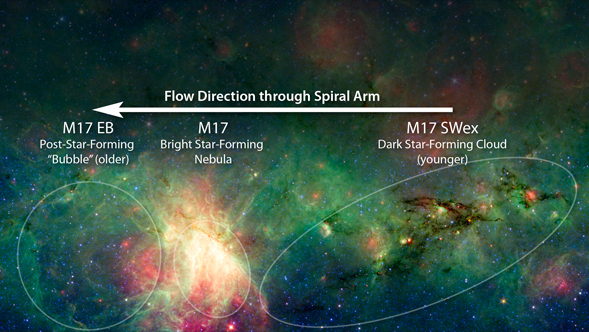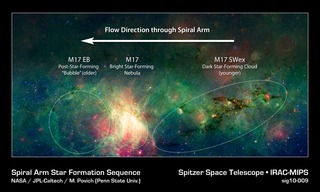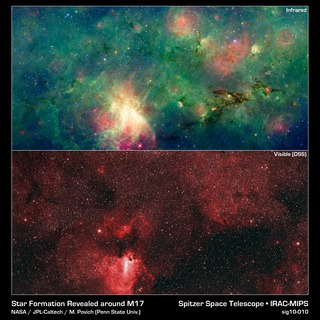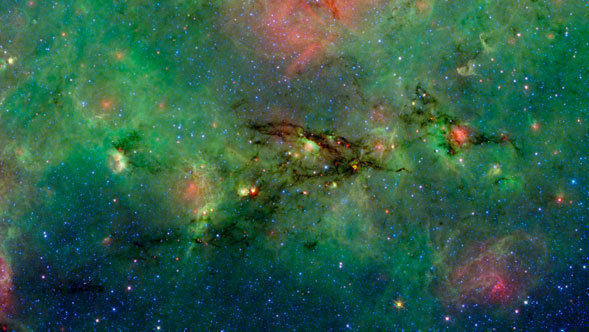
Credit: NASA/JPL-Caltech/M. Povich (Penn State Univ.)
Observation • July 7th, 2010 • sig10-009
sig10-009
A dragon-shaped cloud of dust seems to fly out from a bright explosion in this infrared light image from the Spitzer Space Telescope.
These views have revealed that this dark cloud, called M17 SWex, is forming stars at a furious rate but has not yet spawned the most massive type of stars, known as O stars. Such stellar behemoths, however, light up the M17 nebula at the image's center and have also blown a huge "bubble" in the gas and dust in M17 EB.
The stars and gas in this region are now passing though the Sagittarius spiral arm of the Milky Way (moving from right to left), touching off a galactic "domino effect." The youngest episode of star formation is playing out inside the dusty dragon as it enters the spiral arm. Over time this area will flare up like the bright M17 nebula, glowing in the light of young, massive stars. The remnants of an older burst of star formation blew the bubble in M17 EB to the left.
This is a three-color composite that shows infrared observations from two Spitzer instruments. Blue represents 3.6-micron light and green shows light of 8 microns, both captured by Spitzer's infrared array camera. Red is 24-micron light detected by Spitzer's multiband imaging photometer.
About the Object
- Name
- Omega Nebula • Swan Nebula • Messier 17 • M17 • NGC 6618
- Type
- Nebula > Type > Star Formation
- Nebula > Appearance > Emission > H II Region
- Nebula > Appearance > Dark
- Star > Spectral Type > O
- Distance
- 6,800 Light Years
Color Mapping
| Band | Wavelength | Telescope |
| Infrared | 3.6 µm | Spitzer IRAC |
| Infrared | 8.0 µm | Spitzer IRAC |
| Infrared | 24.0 µm | Spitzer MIPS |
Astrometrics
- Position ()
- RA =18h 20m 27.6s
- Dec = -16° 5' 8.5"
- Field of View
- 2.5 x 1.2 degrees
- Orientation
- North is 61.9° left of vertical








